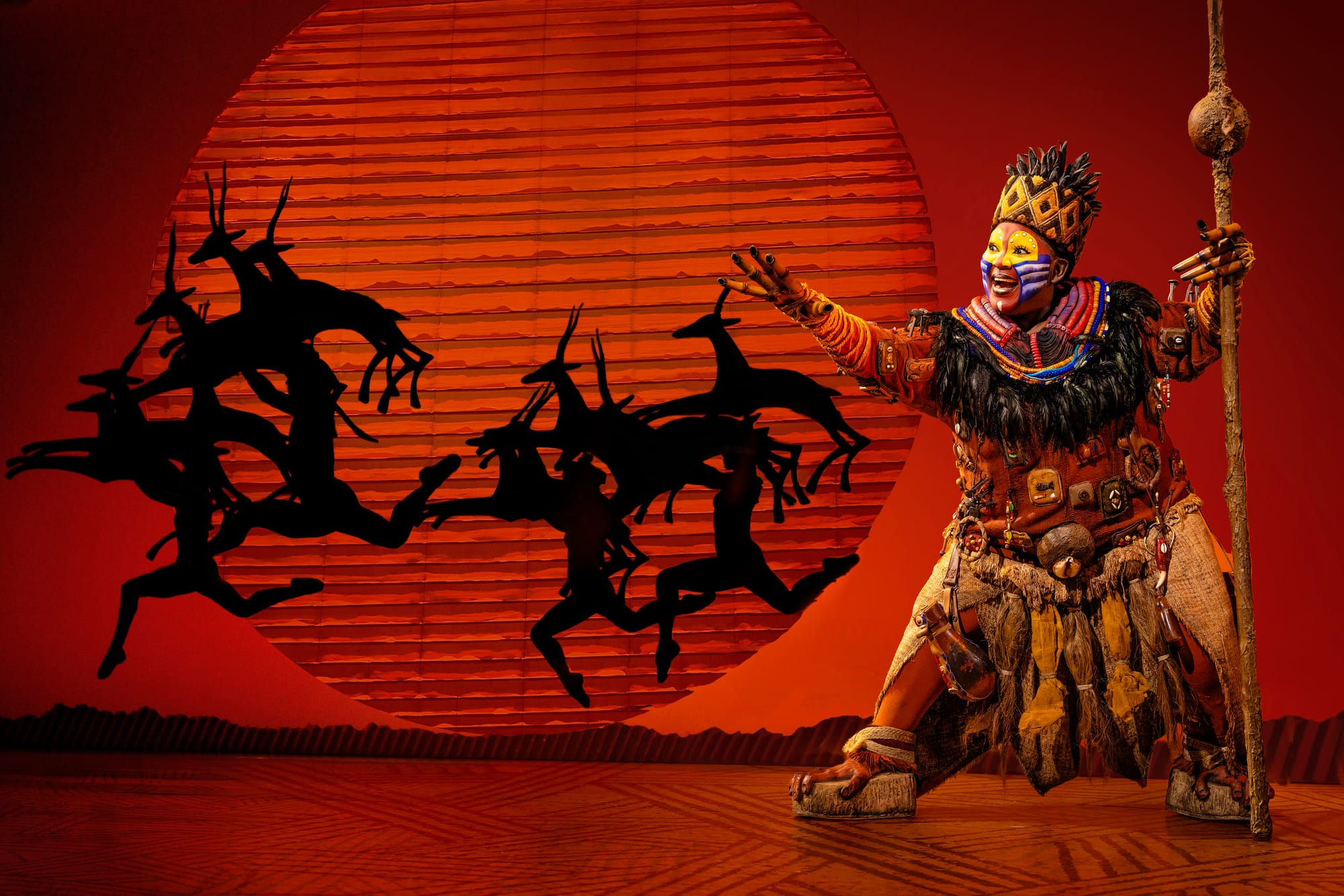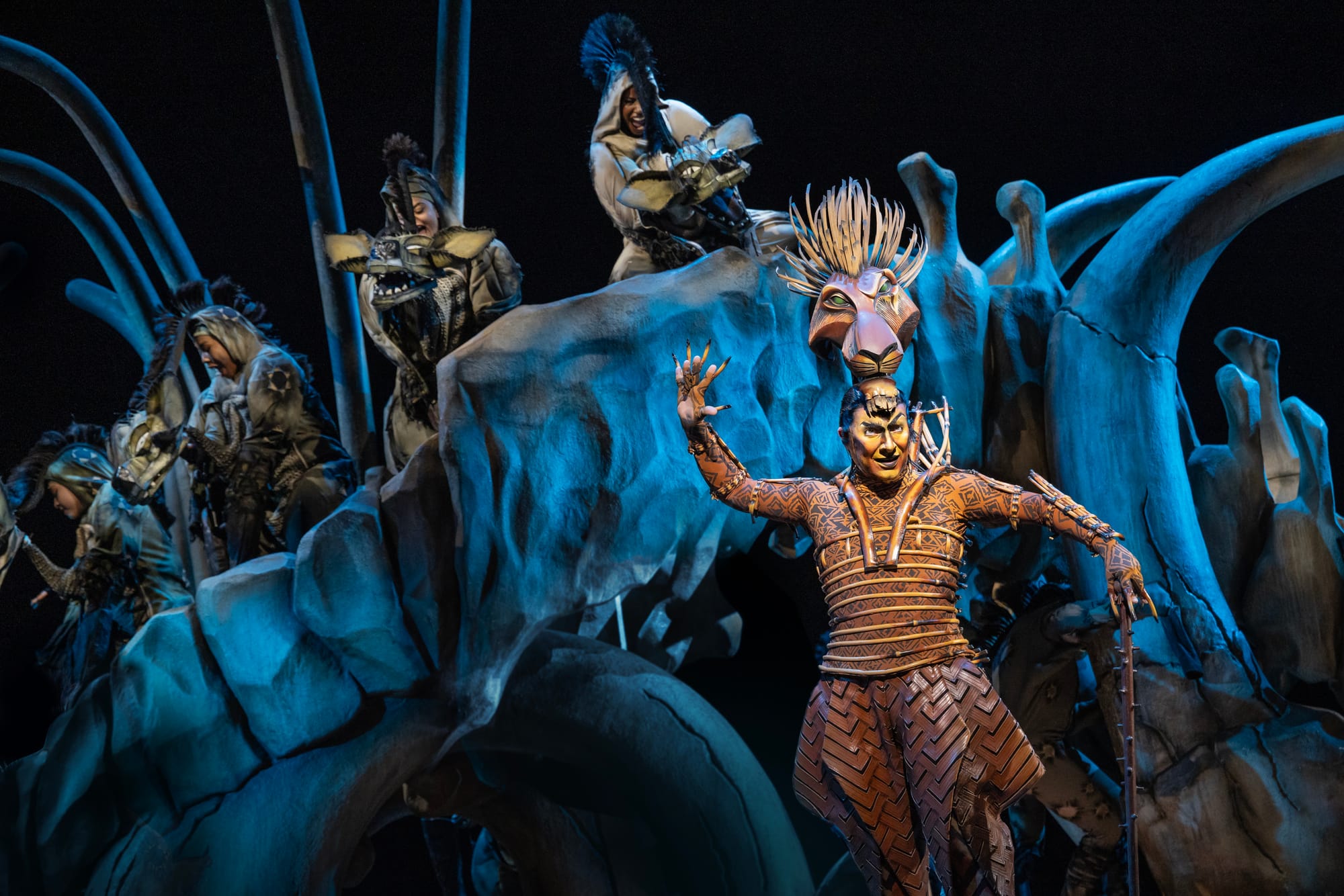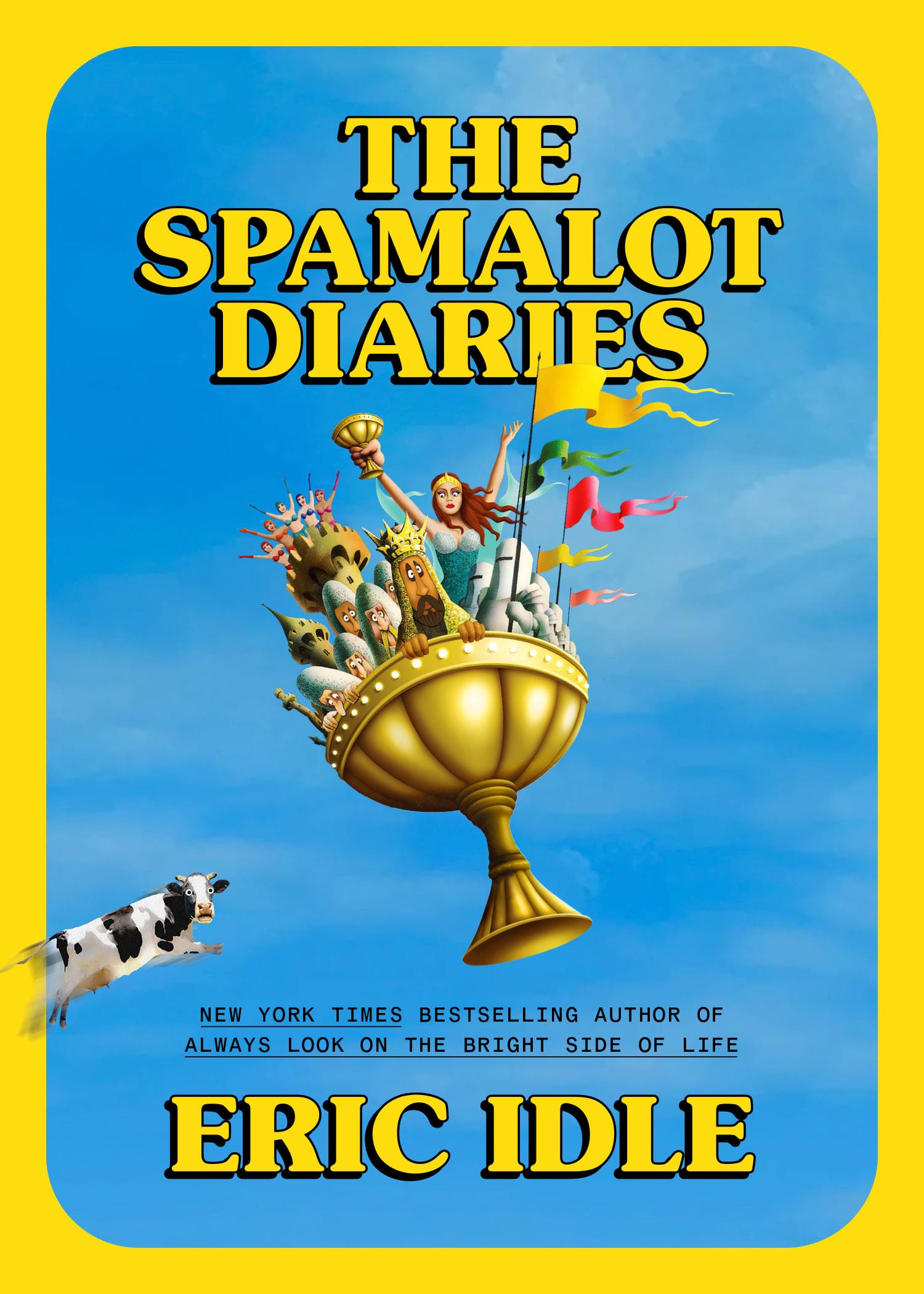The Lion King receives a regal return
The legendary Julie Taymor-directed musical returns in an open-ended run with a largely Canadian cast; plus a Spamalot Diaries book giveaway

This post is sponsored by the original audio drama series Tunnel Runners, which recently launched at CBC podcasts and features a fascinating Toronto-set story, as well as a bunch of actors (many local) whose voices you’ll recognize. See details below.
Even if you’ve seen The Lion King (Rating: ✭✭✭✭) before — either in its original Toronto run from April 2000 to January 2004; on Broadway, where it currently holds the record as the third-longest show ever; or in the three times the tour has touched down here — you’ll want to see it again now that it’s received an open-ended sit-down production featuring many Canadian artists.
As David Mirvish told me last year, when Mirvish announced this new production,
“The Lion King isn’t just any show. It’s evergreen. It tells a universal story and it is so beautifully created, people return to see it again and again. We believe there is not just a new generation of audiences who will want to see the show; there is also a new generation of artists who deserve to launch their careers in this astounding and outstanding show.”
As always (I’m at four times, and counting), the chief draw remains Julie Taymor’s direction, costumes and design (scenic design by Richard Hudson) and the magnificent use of masks and puppets of all kinds (co-created by Taymor and Michael Curry) to represent the animals and setting in this archetypal story of life, death and renewal on the African Pride lands.
Even if the basic story feels familiar — it’s essentially Hamlet played by four-legged creatures, with a bit of Joseph Campbell’s hero’s journey mixed in — the show itself is like no other.
The opening number, “The Circle of Life,” in which animals lumber down the aisles, trot and fly about the stage and audience, all to the rousing anthemic music of Elton John, Tim Rice, with additional music by Lebo M and others, is so stirring that it evokes wondrous gasps.
If the actors playing giraffes seem a little unsteady on their stilts, or the sound mix a tad unbalanced, no worries; this is one of the most technically complex shows in the canon, and it will only become smoother as the run continues — hopefully for a long time.
What’s most impressive upon multiple viewings is just how varied the production’s puppetry and mask work is. Taymor will often show you one perspective on a scene using shadow puppetry, for instance, to establish the setting and action; then she’ll let the actors in costumes prance on and continue the scene.
One of my favourite moments comes during the stampede of wildebeests, the show’s turning point. At first, we see a herd of animals grazing in the far distance. Then, once they’re set in motion, we see and hear them rushing towards us. Taymor uses what appears to be a rolling screen that shows the animals en masse moving downwards, as if descending a hill; suddenly they appear rumbling on the stage proper, their movements thunderous, with the young Simba caught in their midst, during which his father Mufasa attempts to save him.
This scene, which includes a single branch onto which the young cub clings, is so memorably staged that it’s successfully recalled later in the show in another big plot point.
Not every element of the show has aged as well, mind you. Despite a fine performance by Jewelle Blackman as Shenzi, the leader of a group of hyenas befriended and exploited by Scar, Mufasa’s jealous brother, the hyenas’ streetwise pronouncements — not to mention the fact that they live in the deepest, darkest part of the show’s geographical setting — make them seem like cultural stereotypes, something the live-action film tried to remedy.
Speaking of Scar, I’ve always cringed at some of his queer-coded scenes. Reviewing the last tour, I noted that lines like “There’s one in every family” (Zazu quips dismissively to Mufasa about Scar) and the latter’s innuendo-filled statement “You have no idea” when his nephew Simba innocently says “You’re so weird” failed to elicit laughs.

I’m glad to see that this second exchange has disappeared from Roger Allers and Irene Mecchi’s serviceable book. Plus, proudly out actor Salvatore Antonio’s depiction of Scar is so nuanced and focused that his performance almost amounts to queer reclamation. It’s an astonishing turn.
Certainly, characters like Scar, Rafiki (Zara Magudulela), comic foil Zazu (Will Jeffs) and Simba’s pals Timon (Brian Sills) and Pumbaa (Trevor Patt) are a lot more interesting and better drawn than the ostensible leads. Villainous scheming, wise-talking assisting and Borscht Belt-style joking communicate more clearly and effectively than nobility and courage.
There’s not a single weak link in this particular grouping; Magudulela, in particular, finds a range of emotion in her vocal delivery and Trickster-like actions that is hugely impressive and affecting. This might be a patriarchal society — Mufasa’s wife, Sarabi (Lisa Michelle Cornelius), is barely a presence — but the fact that a woman sings the rousing, iconic first note of the show and in a sense guides Simba on his journey to adulthood feels symbolically significant.
Also, the role of Nala, Simba’s childhood friend-turned-romantic partner, has been expanded from the Disney movie. And Camille Eanga-Selenge brings a forthright, confident energy to the role, even if her voice isn’t quite as secure as it could be. Erick D. Patrick, who was brought in to replace an injured Aphiwe Nyezi as Simba, has a soulful, pop-sounding voice that might lack heft but definitely has personality. And David D’Lancy Wilson exudes power and seriousness as Mufasa, even if his acting seems a little stiff. (The young versions of Simba and Nala, played at my performance by Ira Nabong and Nendia Lewars, are delightful.)
The Lion King is currently booking to August 2025. With Come From Away playing a block away at the Royal Alex, at least until next April, things are looking up for commercial theatre here. Don’t take it for granted, however, and think “Hakuna Matata” about securing tickets.
Get more info about The Lion King here.
Idle thoughts: free book giveaway

If you’re a Monty Python fan, are one of the thousands who enjoyed Stratford’s production of Monty Python’s Spamalot last season, or simply like knowing how musicals come to life, you’ll want to pick up The Spamalot Diaries, Eric Idle’s amusing and informative book chronicling the creation of the Tony Award-winning musical from the early 00s.
The book covers everything from the first read-through in New York — where, interestingly, no less a figure than Audra McDonald read the part of the Lady of the Lake before politely declining — to previews in Chicago and ultimately the successful Broadway run. There are spats, disagreements, revelations, cast dropouts, cast discoveries, 11th hour changes — all of which is exciting, even though we know how the production ended up.
Above all, it’s a love letter to artistic collaborations of all kinds, with particular emphasis on Idle’s admiration and love for director Mike Nichols. It was Nichols who gave a then-unknown Casey Nicholaw his first big choreography gig with this show. The musical also acted as breakthroughs for actors like Christian Borle and Sara Ramirez — the latter won a Tony. (There’s an incredible story about how Ramirez’s dancing at a post-preview bash was so impressive that it gave the creators the idea for a new production number for her in the show.)
Written with Idle’s signature wit (be prepared for some groan-worthy puns), the book is breezy and lots of fun. An Afterword written during the show’s 2023 revival said that production will be touring in 2025. A good enough reason to pick up this book.
Speaking of which... I’m giving away three copies of The Spamalot Diaries courtesy of Penguin Random House Canada.
To win one, you must: have a mailing address in Canada; be a member of this newsletter (whether free or paid); correctly enter the following question: What two actors played their roles both on Broadway (in 2005) and the West End (in 2006)?
Deadline for entries is Thursday, November 21, at midnight ET. Three winners will be randomly chosen from among the correct answers and notified the following day. Please send answers to SoSumiContact@gmail.com, with The Spamalot Diaries Contest in the subject heading.
Tunnel vision

This post is sponsored by Tunnel Runners, an original audio drama series from PlayME, the same podcast that adapts acclaimed Canadian plays and turns them into bingeable works for the ear.
I began listening to the show — which has uploaded four out of seven episodes so far, with a fifth dropping tomorrow — while riding the TTC subway. This turned out to be creepily effective, as I kept looking out the windows, expecting to see people scuttling around in the little recesses of the tunnels.
Created by PlayME’s Laura Mullin and Chris Tolley, the thriller begins effectively, taking us into the mind of teenager Cam (Jordan Kuper), a gifted, anxious high schooler who discovers a mysterious underground world after experiencing a panic attack at school.
Who are these people, many of them young, and who is their enigmatic leader with the awesome name Atlas, voiced by Michelle Montieth? Also, there’s another faction of subterranean dwellers... are they good or bad?
I love how script writer Mullin gradually fills in the details of this world, letting us get to know it as Cam does. Besides the effective voice work by actors Toronto theatregoers will recognize, like Peter Fernandes, Gabrielle Sundar Singh, Dan Mousseau and Jeff Yung, there’s also really evocative sound design (by Tolley) that will make you believe you’re taking part in group meetings and scavenging for supplies metres below the city’s streets.
Theme of mental illness and precarious housing give the series some added depth.
I’ll weigh in after the penultimate episode drops, with a spoiler warning about how I think the series will conclude. In the meantime, the next time I’m at the AGO I’ll definitely check out a particular painting that plays a key role in Episode 4.
Begin listening to Tunnel Runners here or search for it at your favourite podcast app.
